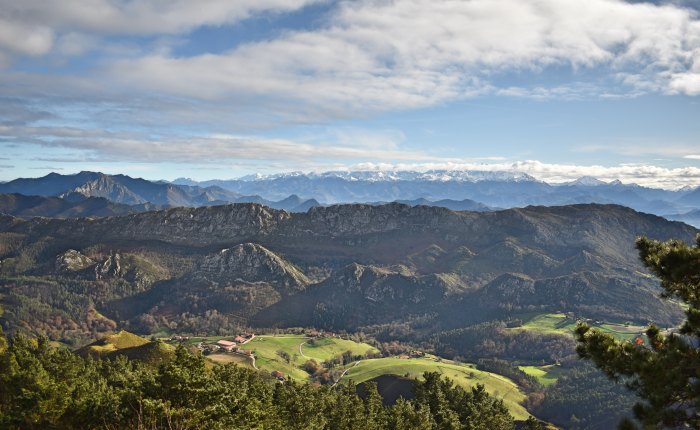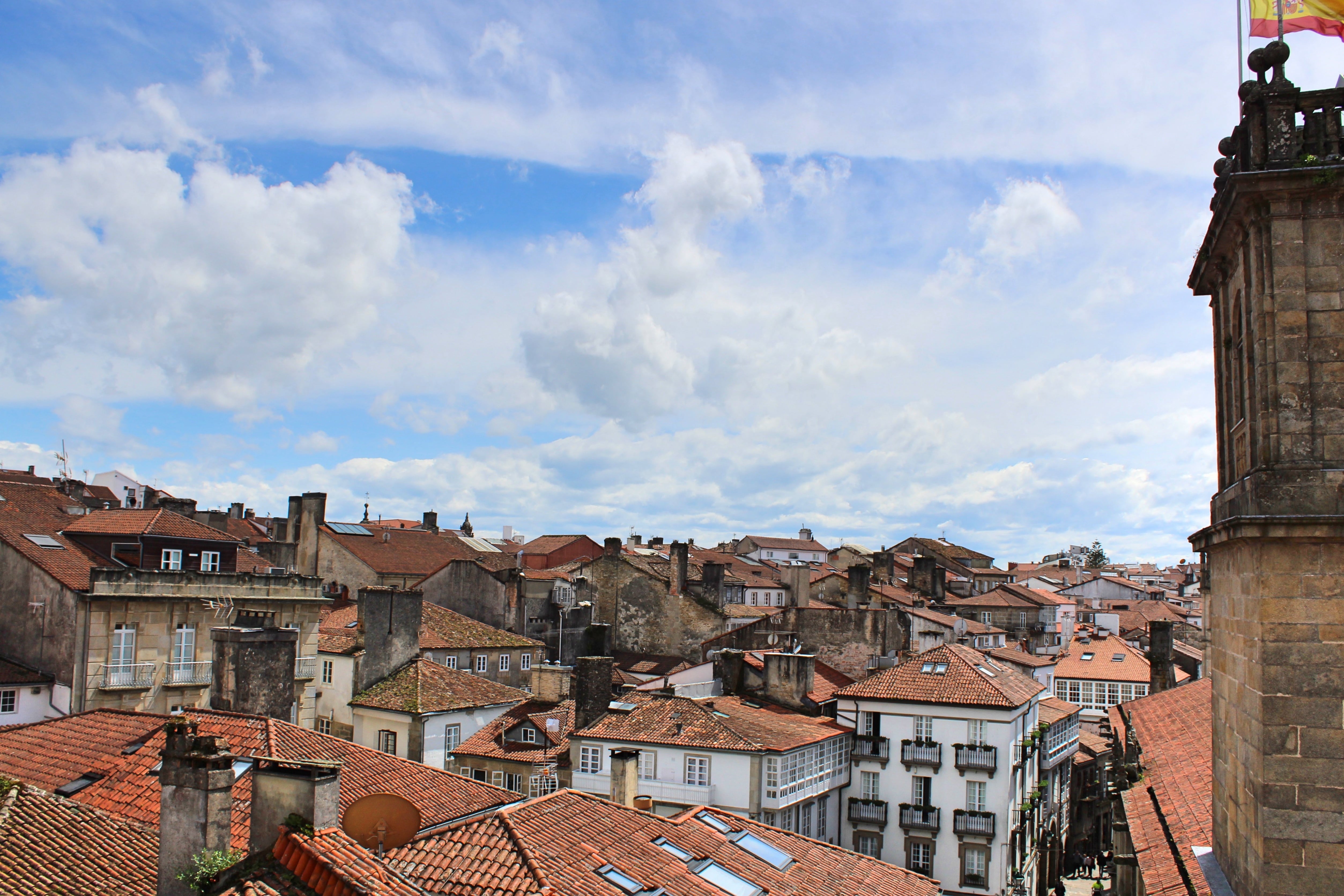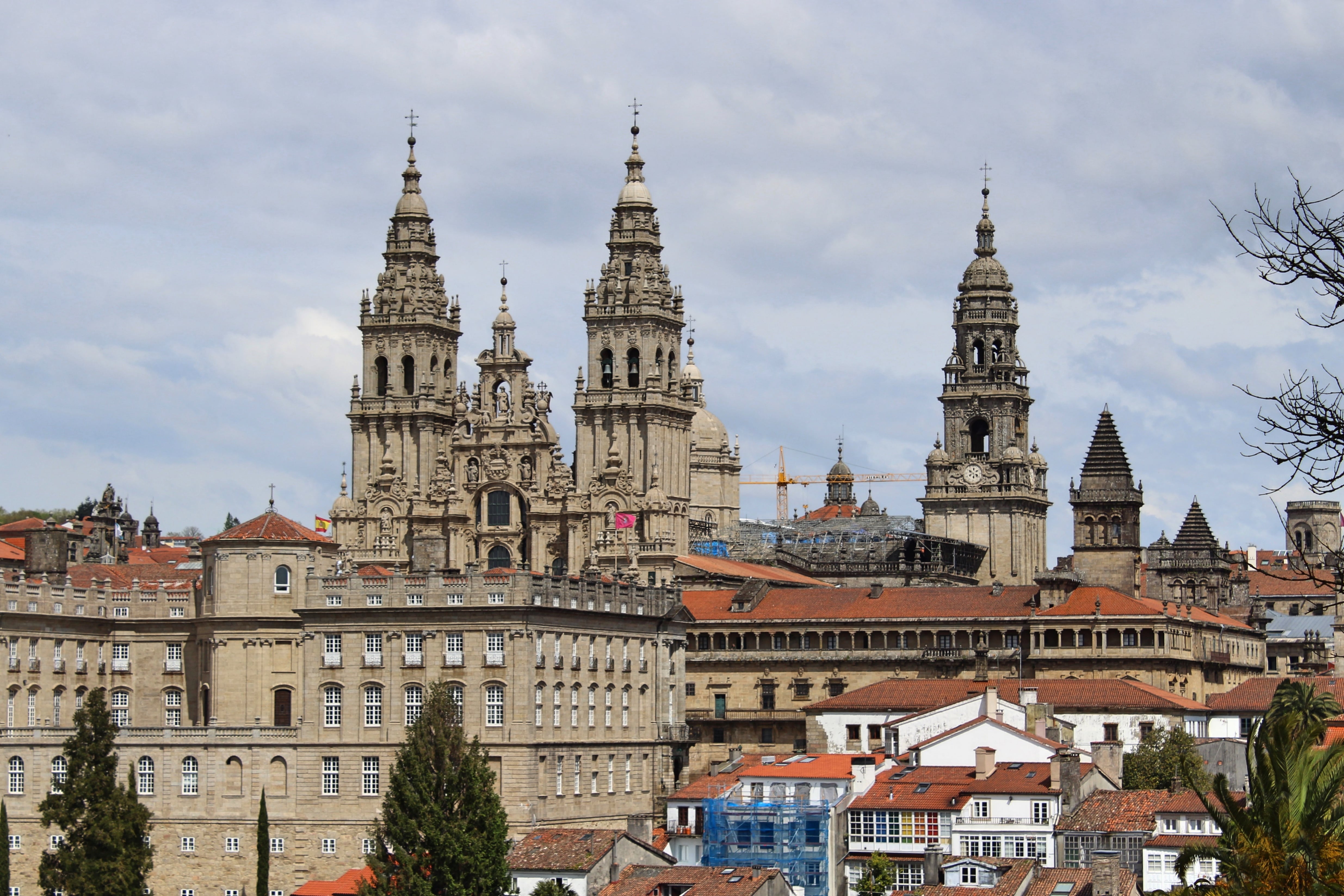From León, the journey continued north. Our GPS took us on the main highway, the AP-66, which cuts straight through the Cordillera Cantábrica—the major mountain range separating the interior plains from the northern coast—with tunnel after tunnel. Our destination was Oviedo, the capital of Asturias. Thankfully, this time our Airbnb had heating and hot water.

Oviedo
On my last visit to Oviedo, I went into raptures about the beauty of the city. This time around, having much to see, we did not spend very much time in the city. Indeed, though last time I regretted not entering the cathedral to see the Cámara Santa—a pre-Romesque church that has been converted into a chapel, and which now houses several famous relics—during this trip I positively forgot. I suppose I will just have to go back.

Instead, our brief time in the city center was spent visiting museums. If memory serves, we were able to buy combination tickets to the Archaeology and the Fine Arts Museums. In general, it is a good idea to visit even relatively obscure, provincial museums in Europe, as there is a good chance that it will have a collection that rivals far more prestigious institutions in the United States. This was no exception. The archaeology museum had artifacts from the stone age to medieval times, and the collection was housed in a beautiful old monastery. Even more impressive was the Museum of Fine Arts (Bellas Artes), which has a surprisingly large and wide-ranging collection of paintings, including some by Picasso, Sorolla, El Greco, and Goya.


Then, we ventured somewhat outside the city to see what are Oviedo’s most precious monuments: Santa María del Naranco and San Miguel de Lillo. These are two pre-Romanesque structures from the 9th century—very rare survivals from this time period. I visited these two structures on my last visit to Oviedo, but I wasn’t able to go inside. This time, however, we arrived in time to take a tour of Santa María del Naranco. Despite its religious name, this structure originated as a palace, built for the Asturian king Ramiro I, and was only consecrated centuries later. Compared to what was to come in the Romanesque and the Gothic ages, this structure seems quaint and primitive. Indeed, considering that it is less spacious than many suburban houses, it is difficult to believe that it was intended to be a palace. But for its time, its design was highly innovative—incorporating rounded arches and the barrel vault to make it more spacious and bright inside. Though these two buildings are youngsters compared with, say, the Colosseum or the Parthenon, they nevertheless evoke the feeling of deep time and lost memories.

The last thing I must mention about Oviedo is the food. In Spain, Asturias is famous for its cuisine, and we sampled two of the most iconic dishes: fabadas (a hearty bean stew) and cachopo (similar to cordon bleu). Washed down with the local hard cider, this makes for a hearty meal in the cold, rainy weather.
Cudillero
With a few hours of daylight to spare on our first day in Asturias, we decided to visit Cudillero. To be honest, I had no idea what this was, but Rebe assured me that it was worth seeing. We put the name ‘Cudillero’ in our GPS and started to drive. Within an hour, I was screaming as we careened down a steep, narrow road straight through the center of a seaside village. The street seemed much too narrow for a car, and the many pedestrians paid no heed as they walked back and forth in front of us. Meanwhile, the GPS took us down and down and down, until we were right at the water’s edge. At least there was free parking.



To be honest, I do not have much to say about Cudillero, other than that it is a memorably beautiful and dramatic village. The entire thing is like an amphitheater, with some roads that ring from side to side, and others that lead down toward the water. Every new vantage point opened up another lovely perspective on the town.
Cangas de Onís
We visited Cangas de Onís when the light was already fading and we were pressed for time. It is a small village and, as often happens, parking was scarce. We found a parking spot on the street but it required me to parallel park—something I hadn’t done in years. I messed it up, badly. To make matters worse, an elderly local couple were standing on the sidewalk, watching me. The shame grew too acute and I eventually gave up and drove away. Thankfully, after I circled back, we found a parking lot. (I have since improved my parallel parking abilities.)

The town is quite lovely but we hardly had time to do anything but walk down the main street and admire the elegant “Roman” bridge, which is actually medieval.
Lagos de Covagonda
Our next stop was nearby. Now, if you visit during the off season, it is possible to drive to these lakes yourself. But as this was a holiday weekend (the Puente de la Constitución, in early December), we had to park the car and board a bus at a bus station right outside Cangas de Onís. It is probably wiser to buy the tickets online instead of doing as we did and buying them on the spot, late in the day.
The bus trip is a bit harrowing, as the enormous vehicle navigates narrow mountain roads. But we got there in one piece. It is a stunning place. The lakes are over 1,000 meters up the mountain (3300 feet), and are surrounded by snow-capped mountains, with still green meadows below.




Mirador del Fitu
I do not remember what day we visited this lookout point, but it was one of the best things we did in Asturias. It is one of the most beautiful mountain views I have ever seen.



The Drive South
For the drive back to León, and then to Madrid, we set the GPS to avoid tolls. This took us, instead of through the mountain via tunnels, over the top via the Puerto de Pajares. This is a lovely mountain road, full of twists and turns, that leads up and up, giving you a wonderful view of the bucolic Asturian countryside.
Along the way, you can see the historic Rampa de Pajares, a train line that seems to weave around the road. This was constructed between 1880-4, and represented a major engineering accomplishment. I am not sure if trains still use the tracks, though. The high-speed trains (AVE) pass through a tunnel rather than climb the mountain.
Right when we reached the top (about 1380 meters, or 4500 feet) we saw a light covering of snow on the ground. In retrospect, we were lucky. Had the weather been less kind, the road might easily have been impassable with snow. Once we began our descent on the other side of the mountain chain, we saw a series of fascinating rock formations. Rebe look up one particularly noticeable mountain on her phone, and found that it was the fossilized remains of a coral reef! If anything, this is an excellent lesson in geology.
After a brief stop in León (described in the other post), we carried on to Madrid. Our trip was over. It was the best mountain scenery I have ever seen.



















































































































































































